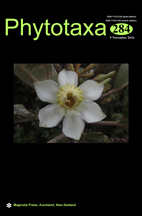Abstract
During an assessment of biodiversity of ascomycetous fungi in the South China Karst area in Guizhou Province, China, a novel species of Prosthemium was collected. We isolated the taxon and sequenced the ITS, LSU and TUB gene regions. The novel taxon is characterized by immersed, globose or depressed globose ascomata, flattened, papillate ostioles, cellular pseudoparaphyses, broadly cylindrical to broadly cylindro-clavate asci, narrowly oblong, muriform ascospores and a prosthemium-like asexual morph produced in culture. The result of phylogenetic analysis based on combined ITS, LSU and TUB sequence data indicate that the species belongs to the genus Prosthemium and formed a separate clade within the genus. The new fungus is most similar to Prosthemium betulinum, Pr. intermedium, Pr. neobetulinum and Pr. stellare, from which it differs in the overall smaller size and morphology of sexual morph and asexual morph, as well as phylogeny. Thus new fungus is described and illustrated herein as Prosthemium sinense.

